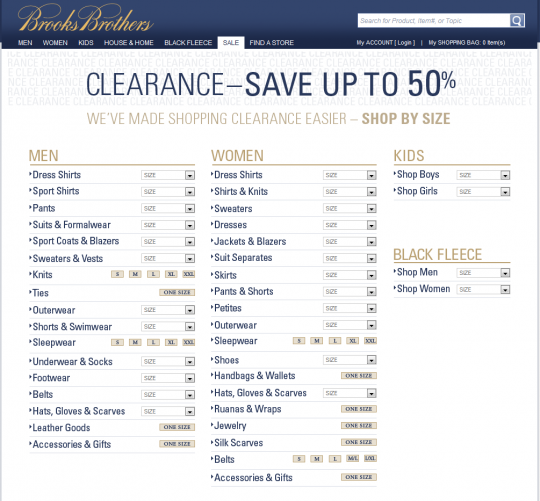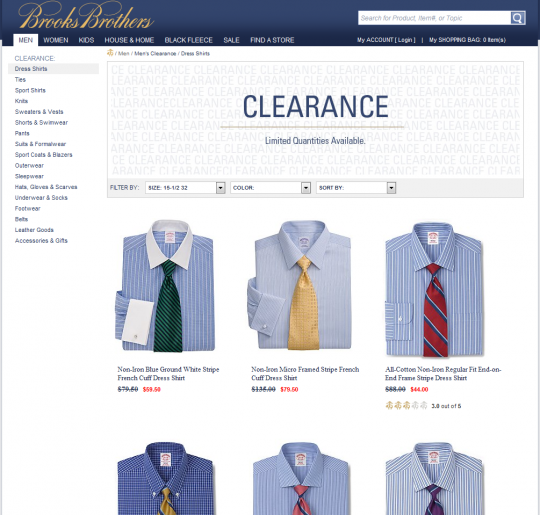I don’t do a lot of online clothes shopping, so I apologize if this is the norm. I suspect it isn’t the default.
There’s a current sale (May 9-12, 2012) at Brooks Brothers, and their Non-Iron dress shirts are pretty nifty.
Once you go to their site, it looks like this:

Brooks Brothers website sales page Screenshot
Not the prettiest page you’ve ever seen, but it cuts to the chase. This lets you only search for clothes in stock that’s your size. Brilliant! I could care less if there’s a $200 item marked down to $8 if it’s size XXL.
After selecting a size, you’re taken to a page where you don’t have to choose between View 15 per page OR View 25 per page OR View 50 per page.

Shirts Search Results page Screenshot
For my search, it shows all results on one page since bandwidth in 2012 America isn’t as much as problem as dial up 10 years ago.
UI/UX/design isn’t about looking pretty. It’s about having something that’s simple/easy/intuitive to use and gets the task done. In this case, I was able to search only the relevant sized dress shirts, add to cart, and checkout (without creating a user account) quickly.




